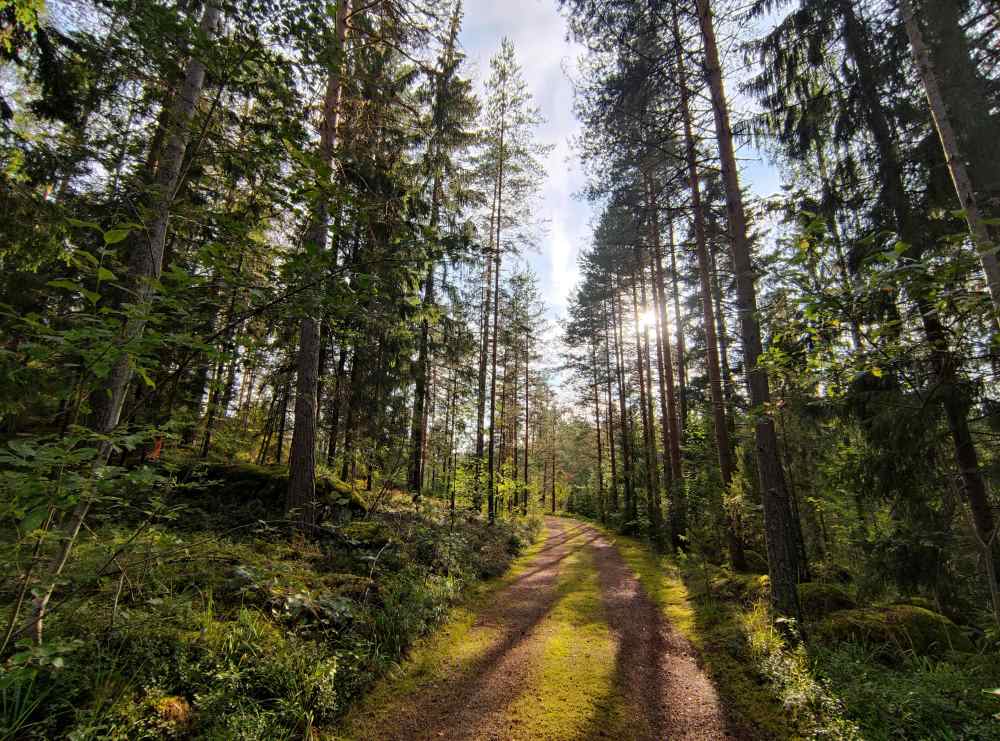Explore the latest insights from top science journals in the Muser Press daily roundup (August 22, 2025), featuring impactful research on climate change challenges.
In brief:
Land use severely reduces global carbon in plants and soils
Human activities, such as deforestation and the expansion of agricultural areas, have a massive impact on the natural state of ecosystems. As a result, large amounts of carbon are released into the atmosphere, contributing substantially to anthropogenic climate change.
A team led by LMU geographer Raphael Ganzenmüller has now calculated that human influence has reduced natural land carbon stocks by a total of 24 percent – which corresponds to 344 billion metric tons of carbon.
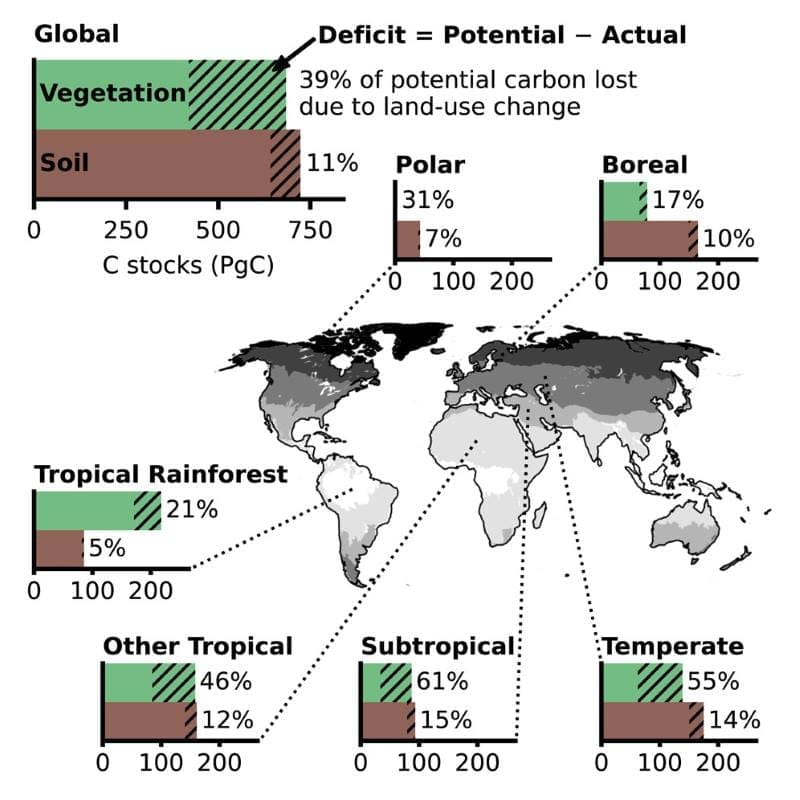
By combining high-resolution Earth observation data with historical and current land use data and machine learning, the team created a detailed global estimate. The researchers were also able to show that most of the loss is caused by the expansion of pasture and croplands, as well as forest management.
“Our study reveals the far-reaching human impact on the global carbon cycle,” explains Ganzenmüller. “The deficit of 344 billion metric tons of carbon is comparable in size to global CO₂ emissions from coal, oil, and natural gas over the past 50 years. Our approach provides a clear picture of where and how vegetation and soils have been degraded and can be used as a general indicator of the state of ecosystems.”
Julia Pongratz, Professor of Physical Geography and Land Use Systems at LMU, adds: “Our study provides important insights for climate policy. For example, the findings can be used to evaluate carbon removal measures. Moreover, they underscore the great potential of restoring carbon stocks on land to achieve global climate goals.”
The findings are relevant for both policymakers and scientists: They provide an important basis for prioritizing the conservation and restoration of carbon sinks and offer opportunities to improve existing climate models and their projections.
Journal Reference:
Raphael Ganzenmüller, Wolfgang A. Obermeier, Selma Bultan, Seth A. Spawn-Lee, Florian Zabel & Julia Pongratz, ‘Humans have depleted global terrestrial carbon stocks by a quarter’, One Earth 8, 8: 101392 (2025). DOI: 10.1016/j.oneear.2025.101392. Also available on ScienceDirect.
Article Source:
Press Release/Material by Ludwig-Maximilians-Universität München (LMU)
Tropical systems spin up Mid-South crop insurance rates
Farmers in Arkansas, Louisiana and Mississippi, pay four to six times more for crop insurance than their counterparts in the upper Midwest, and Hunter Biram wanted to know why.
It’s a question that’s been in Biram’s head since his dissertation days at Kansas State University.
Now a Ph.D. extension economist for the University of Arkansas System Division of Agriculture, Biram, along with co-authors Cameron-Harp, agricultural economist, and Jesse Tack, professor of Agricultural Economics, both of Kansas State, have some answers.
The result of their research was published in the American Journal of Agricultural Economics.
“I began to study the price of insurance crop insurance across the United States, and what I noticed was, there were vast differences in prices between what folks in the South and primarily the Mid-South would pay versus those in the upper Midwest,” he said. “One thing that I begin to think about and do some research on is what’s different about the Mid-South?”
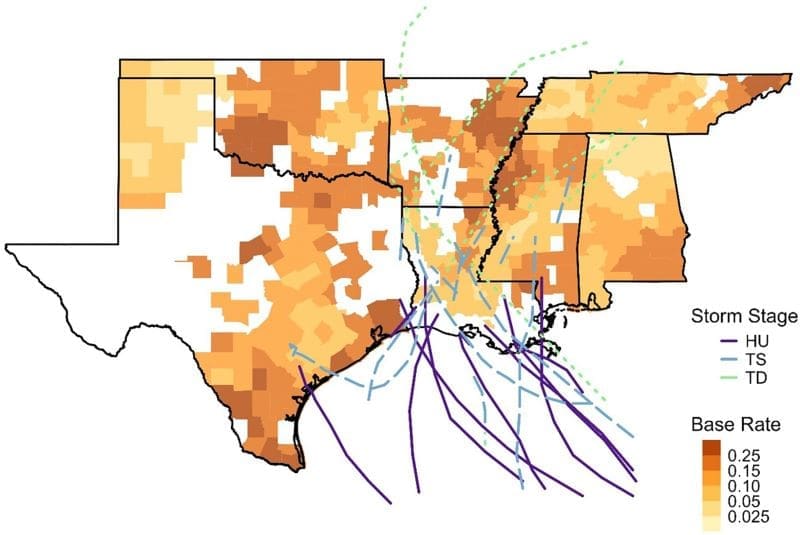
Biram began to delve into the differences in rates between Arkansas, Louisiana and Mississippi versus Illinois, Indiana, Ohio, Iowa and parts of Minnesota.
“I’m not saying that the rates in the Mid-South should match those of the Upper Midwest. But we’re talking about rates that are 4, 5, 6 times higher than that of the Upper Midwest,” he said.
Biram said “there’s a 2-cent per $1 of liability rate in the Upper Midwest, where a similar situation in the Mid-South could be more like 15 or 16 cents per dollar of liability. There’s a significant difference.”
Hurricanes and production risks

“Obviously, everybody faces similar price volatility from global markets, things like the Russia and Ukraine conflict among others,” he said. “But one thing that’s unique in the Mid-South is the incidence of hurricanes. We’re so close to the gulf.”
Biram said that while hurricanes don’t explain everything: “I began to dig a little big deeper to find what portion of that price is going to be attributed to hurricane incidents. That’s what this study attempts to do: What is the impact of hurricanes on production risk.”
Production risk generally translates into crop insurance premium rates. “While premium rates drove the question, it’s really more of a symptom,” he said.
While the Upper Midwest may weather tornadoes and the occasional derecho, the frequency and scope of damage are different than that of hurricanes.
Biram said he limited the study to named storms that made landfall in Louisiana and Mississippi because they are “most likely make an impact on Arkansas.”
Crop insurance gaps
In 2021 alone, hurricanes caused $145 billion in property damage, making it the third most costly hurricane season and seventh to see 10 or more $1 billion-dollar events, according to the National Oceanic and Atmospheric Administration.
Between 2002 and 2021, the Mississippi Delta region of Arkansas, Louisiana and Mississippi experienced 30 hurricanes and tropical storms. Several storms, degraded to tropical depressions, meandered their way across Arkansas, affecting areas not covered by a hurricane-specific insurance called HIP-WI.
HIP-WI or the Hurricane Insurance Protection – Wind Index endorsement, is offered by the Risk Management Agency of the U.S. Department of Agriculture. There’s also an add-on that covers tropical storms.
The full value of the HIP-WI Endorsement is paid if a county, or adjacent county, is within the area of sustained hurricane-force winds from a named hurricane based on data published by the NHC.
However, in Arkansas the eligible counties are bounded by the Louisiana border to the south, Union County to the west, up through Cleveland and Jefferson counties, with Lee and Monroe counties being the northernmost of the eligible counties in Arkansas.
Above and below the eligibility line
“We’ve shown that the portion of hurricane incidence is, for the most part, not too different from above the HIP-WI eligibility line as it is below,” Biram said.
Looking at wind and water damage to four crops: corn, cotton, rice and soybeans, “the portion of the base premium rate attributable to hurricane damage is greatest in counties closer to the coast and then typically decays moving inland, which is expected as hurricane systems lose power as they move inland,” the researchers wrote.
“There are counties in northeast Arkansas that are higher than parts of Louisiana – especially in the case of cotton. It’s very clear in cotton and in soybean but not so much in rice and corn,’’ Biram said.
“The proportion of the rate can be quite large reaching a high of 92 percent for cotton and 42 percent for soybeans,” Biram said. “The impacts for rice and corn are much smaller with highs of 29 percent and 9 percent respectively.”
Cotton tends to be vulnerable because boll formation and opening happen during hurricane season. Cotton and soybeans are less likely to incur prevented planting losses which are more prevalent in corn and rice.
“I think the next step would be to visit with the Risk Management Agency and other policy makers to find a way to help farmers in northeast Arkansas manage hurricane risk. I know it sounds interesting to think that we need to manage hurricane risk in northeast Arkansas,” Biram said.
Journal Reference:
Biram, Hunter D., Micah Cameron-Harp, and Jesse Tack, ‘Measuring the Impact of Hurricane Incidence on Agricultural Production Risk Using Insurance Data’, American Journal of Agricultural Economics online, 1–19 (2025). DOI: 10.1111/ajae.70008
Article Source:
Press Release/Material by University of Arkansas System Division of Agriculture
All-weather 3D self-folding fabric for adaptive personal thermoregulation
A sudden snow squall at noon, a scorching asphalt marathon, or an air-conditioned office that never quite gets the temperature right – these are the daily extremes our clothes were never built to handle. In a sweeping review published in Nano-Micro Letters, researchers from The Hong Kong Polytechnic University, led by Professor Dahua Shou, introduce a 3D self-folding knitted fabric that thinks like a thermostat. It toggles between radiative cooling and passive warming simply by stretching or relaxing, delivering year-round comfort without extra layers, without batteries, and without compromise.
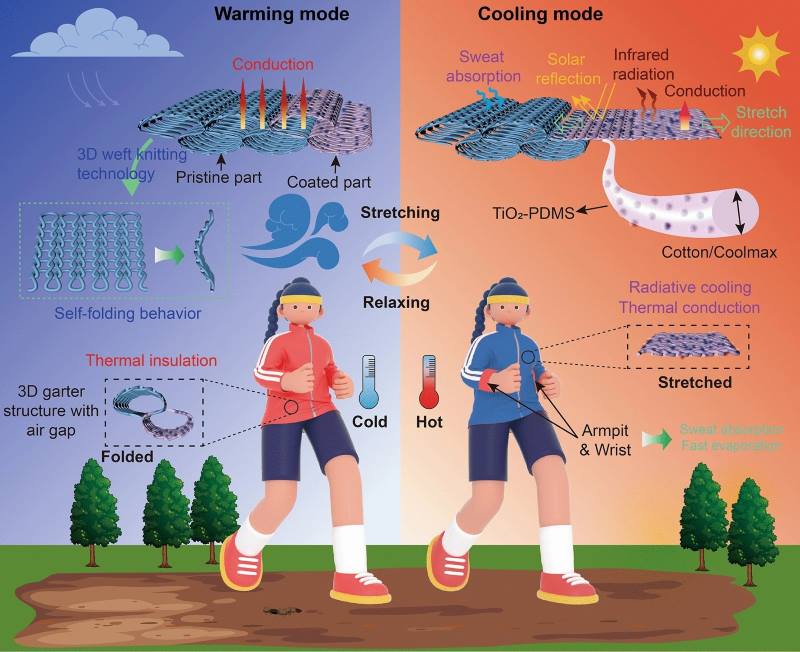
Why Shape-Shifting Matters
Traditional “dual-mode” textiles either flip two layers like a reversible jacket or rely on bulky phase-change capsules. They add weight, trap sweat, and often fail halfway through a long day. The new fabric sidesteps every limitation by leveraging geometry itself. A single sheet of yarn is programmed – stitch by stitch – to curl into a 3-D accordion when relaxed, then flatten into a 2-D sheet when tugged. No hinges, no electronics, no extra seams.
Inside the Origami Thermostat
– Warming Mode – 3-D Air Fortress –
- Structure: 7×7 garter loops create 4–6 mm-high ridges that trap still-air cells.
- Thermal Resistance: 0.0627 m2 K W-1 – on par with lightweight down – measured on a guarded hot-plate at 35 °C.
- Moisture Buffer: Cotton/Coolmax yarns absorb 387 % of their weight in sweat and evaporate it at 1.18 g h-1, beating commercial sports fabrics by 15 %.
- Micro-climate: Restricted airflow between ridges slashes convective heat loss, cutting skin-to-air heat flow by 50 % versus the flattened state.
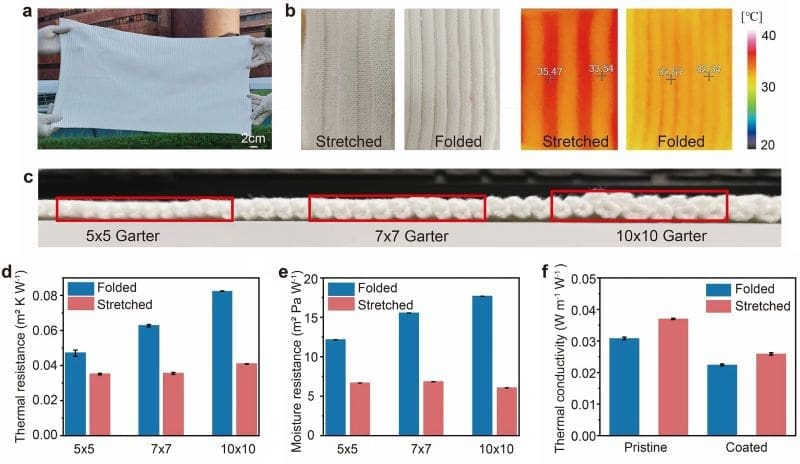
– Cooling Mode – 2-D Radiator Sheet –
- Stretch & Snap: One gentle pull (≈ 2 N for 2.5 cm extension) collapses the ridges into a 1.2 mm sheet.
- Surface Chemistry: A TiO2-PDMS coating blankets the yarn. 89.5 % solar reflectance bounces away visible and near-IR light; 93.5 % mid-IR emissivity beams body heat through the 8–13 µm atmospheric window.
- Real-World Cooling: Under 800 W m-2 solar irradiance, arm sleeves recorded 4.3 °C lower skin temperature after 30 min compared with uncoated sleeves.
- Air & Vapor Flow: Even with the coating, air permeability remains 18.7 mL s-1 cm-2 – breathable enough for marathon running.
– Knitting the Future, Stitch by Stitch –
- Material Palette: Ordinary cotton (structure) + Coolmax (moisture wicking) + TiO2 (solar shield) + PDMS (elastic binder). All are commodity materials, keeping the cost within commercial apparel budgets.
- Machine-Friendly: Standard flat weft-knitting machines (STOLL CMS 822) produce 7×7 garter units at 5.7 wales cm-1 – a production speed that rivals T-shirt fabric.
- Durability Marathon: 1,000 fold/relax cycles and 5 home-laundry washes later, stretch recovery is still >95 %, and TiO2 loss is <1 %.
From Lab Bench to Backcountry
Prototype garments – shirts, sleeves, and full jackets – have already logged field hours in Hong Kong’s 32 °C midday sun and 15 °C mountain dawns. Volunteers reported no clammy feel, even after 4 hours of cycling, thanks to the Coolmax backbone and micro-gaps between coated yarns. The fabric’s 176 g m-2 areal mass is lighter than a standard running tee, and the transition from 3-D to 2-D can be triggered by a simple cuff tug – no zippers, no gadgets.
Next Moves
The team is now embedding humidity-sensitive yarns that automate folding in high humidity (sweat) and unfolding when dry, moving toward a hands-free climate jacket. Military, disaster-relief, and commuter markets are already in discussion, with pilot lines slated for late 2025. Long-term, the same origami-knit logic could wrap EV battery packs, drone skins, or refugee shelters – anywhere the weather refuses to stay put.
Journal Reference:
Zhang, X., Gu, Y., Chao, X. et al., ‘All-Weather 3D Self-Folding Fabric for Adaptive Personal Thermoregulation’, Nano-Micro Letters 17, 290 (2025). DOI: 10.1007/s40820-025-01812-2
Article Source:
Press Release/Material by Shanghai Jiao Tong University Journal Center
Long-term biochar use found to sustainably boost crop yields and cut greenhouse gas emissions
Farming produces a huge amount of crop waste including straw, husks, and stalks every growing season. Unfortunately, common disposal methods – burning, plowing the waste back into the fields, using it as animal feed, and even composting – release greenhouse gases (GHG) such as methane (CH4), nitrous oxide (N₂O), and carbon dioxide (CO₂), contributing to climate change and long-term risks to food security.
In contrast, biochar – a charcoal-like material made by heating agricultural waste in low-oxygen conditions (pyrolysis) – offers a promising and eco-friendly alternative, according to a new study by Chinese scientists.
The team, led by Profs. Yan Xiaoyuan and Xia Longlong from the Institute of Soil Science of the Chinese Academy of Sciences, showed that biochar can deliver lasting benefits for food security and climate mitigation when applied to farmland over the long term. In particular, the study showed that repeated annual applications not only sustain but also amplify biochar’s positive effects on crop yield, soil health, and GHG reduction.
In this study, the researchers analyzed high-quality field experiment records from 438 studies, including consecutive annual data from 29 long-term field experiments. The results, published in PNAS, demonstrate that annual biochar application over four years or more increased global crop yields by an average of 10.8%, cut CH4 emissions by 13.5% and N₂O emissions by 21.4%, and raised soil organic carbon (SOC) content by 52.5%.
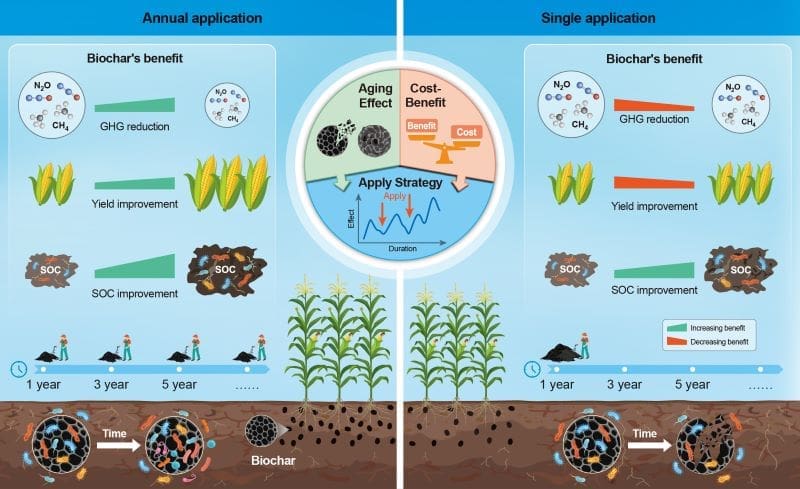
While single application of biochar showed weakened effects over time due to the aging effect, the study showed it was still beneficial, with continued yields and SOC rise, and continued CH4 and N₂O mitigation, though with a weakening trend.
“We wondered how significant biochar’s potential could be for carbon sequestration and emission reduction in global farmlands under long-term application,” said Yang Jingrui, first author of the study and a PhD student from ISSCAS.
Based on current straw and biochar management practices, the researchers estimated that converting 70% of straw into biochar for agricultural fields could boost global grain yields by 190 million tons annually and enhance carbon dioxide removal (CDR) potential by 2.01 Pg of CO₂-eq annually – about 30% of China’s average annual grain yield from 2018 to 2021.
After accounting for GHG emissions from biochar production (0.25 tons of CO₂ per ton of biochar), the net CDR potential was still 1.84 Pg of CO₂-eq per year, offsetting about 4.6% of global fossil fuel CO₂ emissions.
The findings suggest that strategic deployment of biochar at multi-year intervals or with break periods between yearly applications could maintain its benefits cost-effectively while minimizing risks. Expanding field experiments and comparative trials across different soil types, climates, and cropping systems are crucial for refining application strategies, especially in determining optimal frequencies and rates.
While periodic biochar application tailored to local conditions can reduce costs and secure long-term advantages, the initial economic burden may deter risk-averse farmers.
“Since farmers are unlikely to increase input costs unless there is strong evidence it pays off, large-scale demonstration trials in major grain-producing regions such as the North China Plain and the U.S. Corn Belt are essential to prove both economic and environmental benefits,” said Prof. Yan.
A cost-benefit analysis conducted by the team showed that increased yields and reduced GHG emissions could compensate for around 81% of biochar procurement costs, with greater gains possible when nitrogen loss reduction is factored in. The researchers argue that government-backed subsidies and supportive policies will be crucial to scaling biochar adoption and realizing its global potential for sustainable agriculture and climate mitigation.
Journal Reference:
J. Yang, L. Xia, K.J. van Groenigen, X. Zhao, C. Ti, W. Wang, Z. Du, M. Fan, M. Zhuang, P. Smith, R. Lal, K. Butterbach-Bahl, X. Han, J. Meng, J. Liu, H. Cai, Y. Cheng, X. Liu, X. Shu, […] & X. Yan, ‘Sustained benefits of long-term biochar application for food security and climate change mitigation’, Proceedings of the National Academy of Sciences U.S.A. 122 (33) e2509237122 (2025). DOI: 10.1073/pnas.2509237122
Article Source:
Press Release/Material by Chinese Academy of Sciences (CAS)
Featured image credit: Gerd Altmann | Pixabay



